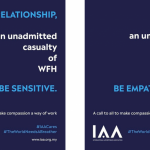Johnson & Johnson has for decades known its raw talc and finished powders at times tested positive for small quantities of asbestos, with the company’s doctors and lawyers vexed by the findings but failing to alert regulators or consumers, according to a Reuters story.
Johnson & Johnson stock — up 6 percent for the year — plunged 11 percent on news of the report, based on memos, internal documents and confidential memos that the maker of Johnson’s Baby Powder had been compelled to share with attorneys for some 11,700 plaintiffs who claim the company’s powder products caused their cancers.
The cases include thousands of women with ovarian cancer.
Any exposure to asbestos is a health risk, according to the World Health Organization and other medical groups.
Company documents, along with deposition and trial testimony, show that from at least 1971 to the early 2000s, tests showed small amounts of asbestos could sometimes be found in the company’s raw talc and finished powders, Reuters reported.
At the same time, company executives, mine managers, scientists, doctors and lawyers worried about the problem and how to address it but did not disclose the issue to regulators or the public.
An examination of the documents also revealed how J&J succeeded in curbing regulators’ plans to curtail asbestos in cosmetic talc products as well as scientist research on talc’s health effects, Reuters stated.
Johnson & Johnson denied the Reuters report in a statement sent to the Associated Press. J&J said “thousands of independent tests by regulators and the world’s leading labs prove our baby powder has never contained asbestos.”
J&J dominated the talc powder market for more than a century, with its talc products adding $420 million to the company’s $76.5 billion in sales in 2017.
While contributing a relatively small portion to overall revenue, Johnson’s Baby Powder is seen as a major component of J&J’s image as a caring company.
MARKETING Magazine is not responsible for the content of external sites.
The Malaysian Marketing Conference & Festival 2024 at the Sime Darby Convention Centre is a TWO-day marketing event for all those in Marketing, Media, Advertising, PR, Digital, Data, and more….
The experience is on May 15 & 16, with Keynote Speakers, multiple tracks or Breakaway Sessions hosted by our booth partners who will show you the latest in the industry.








